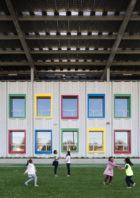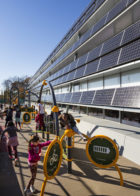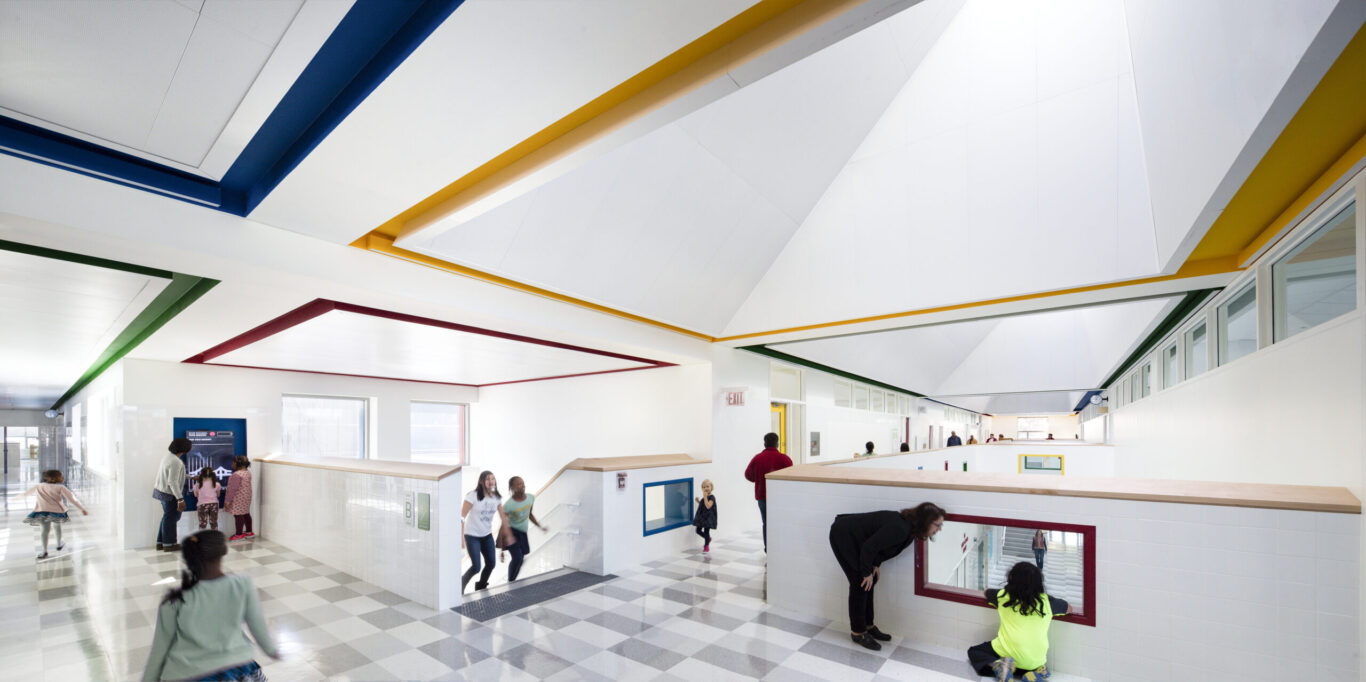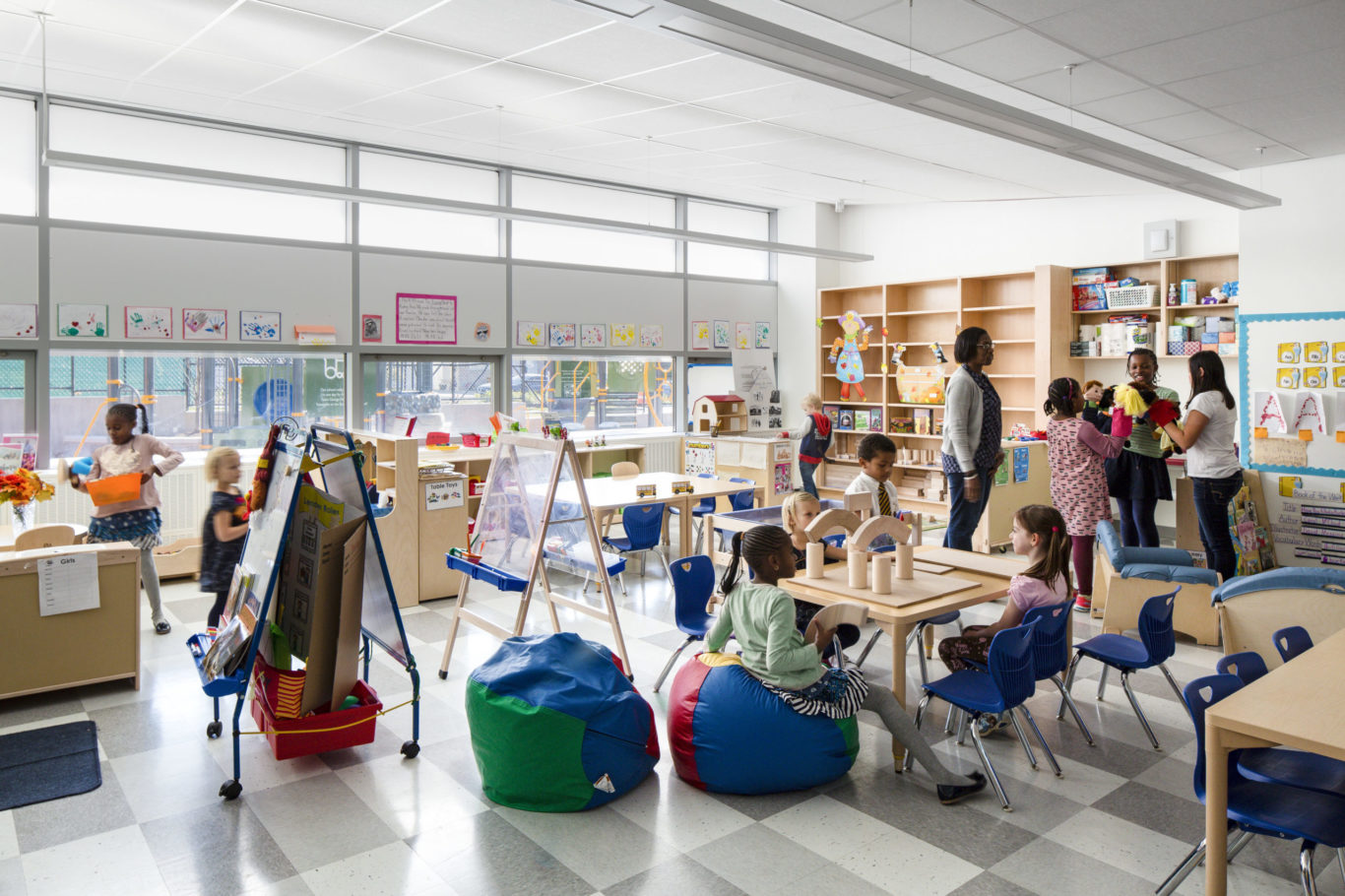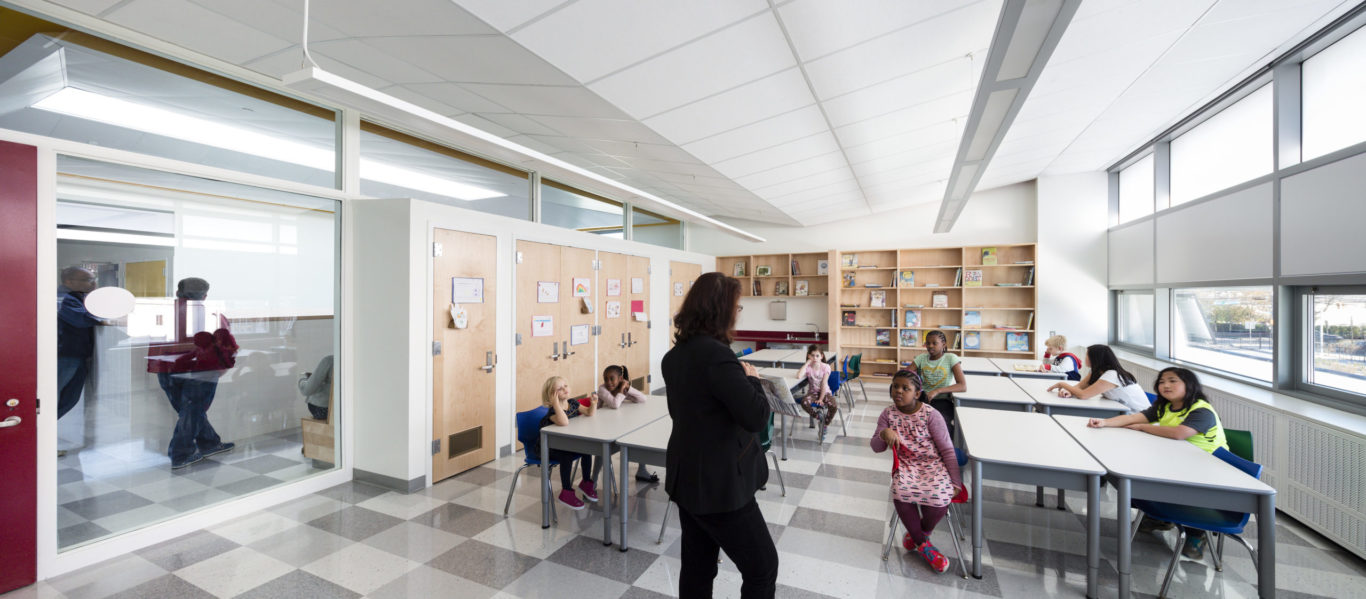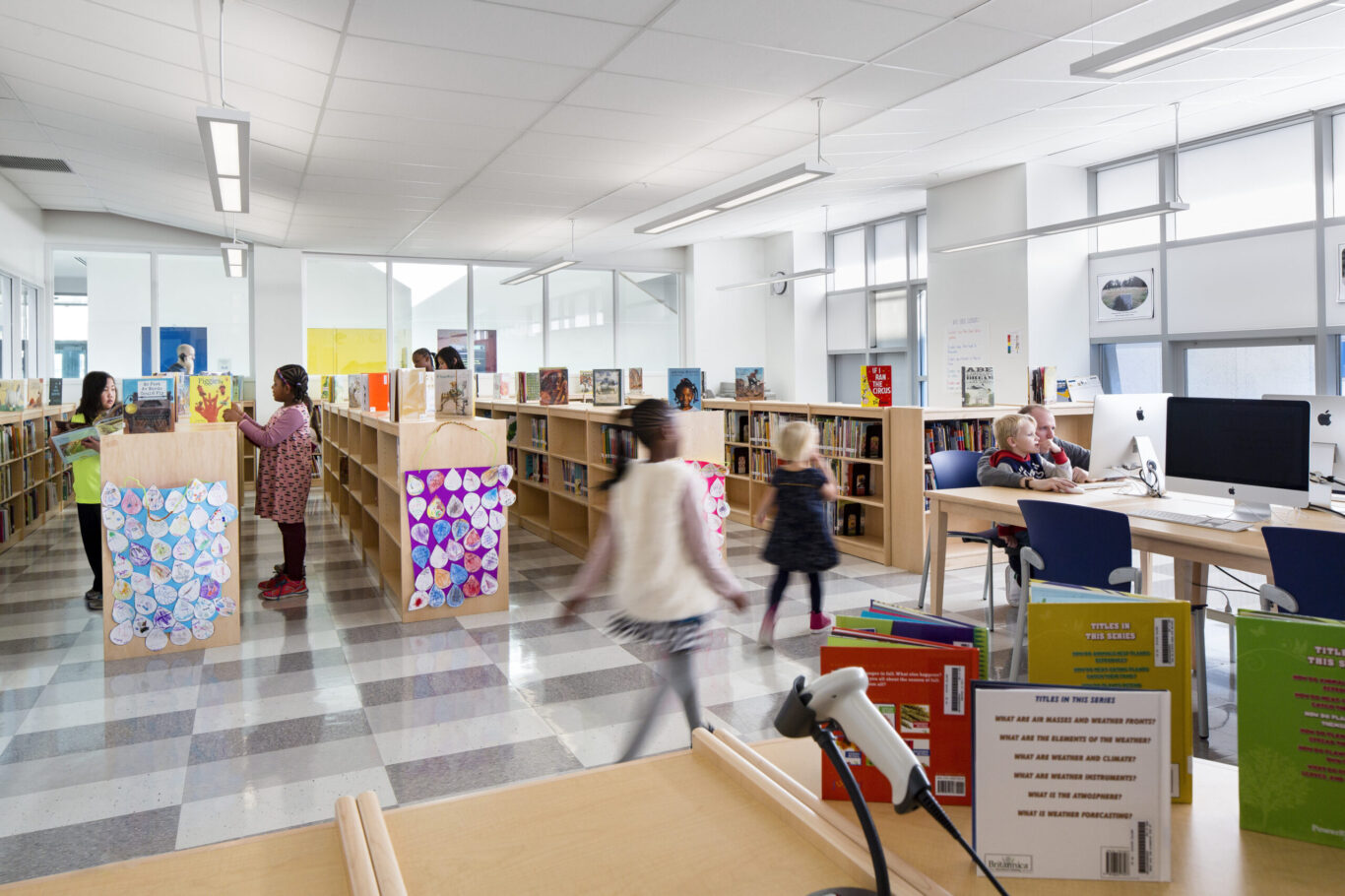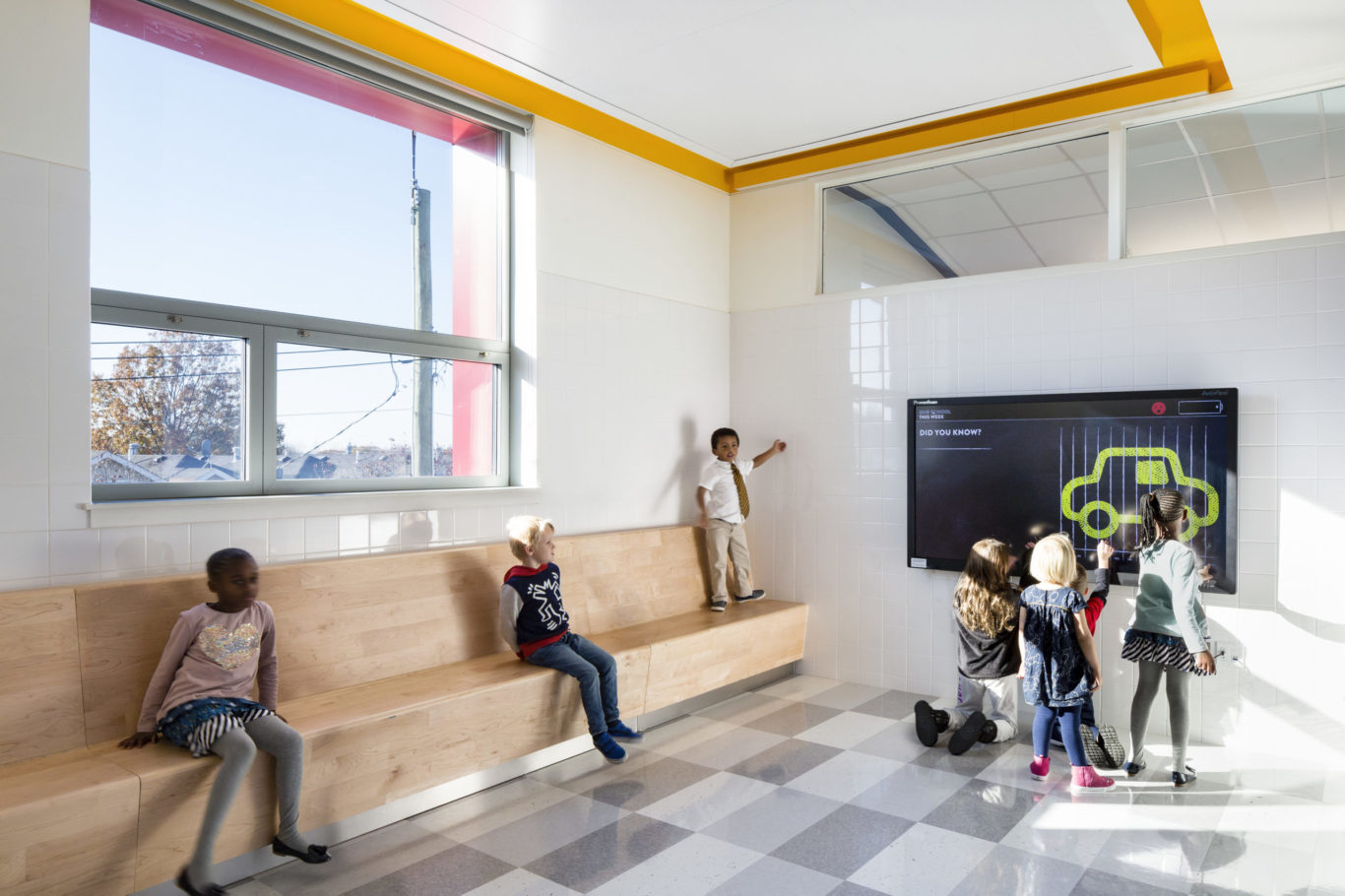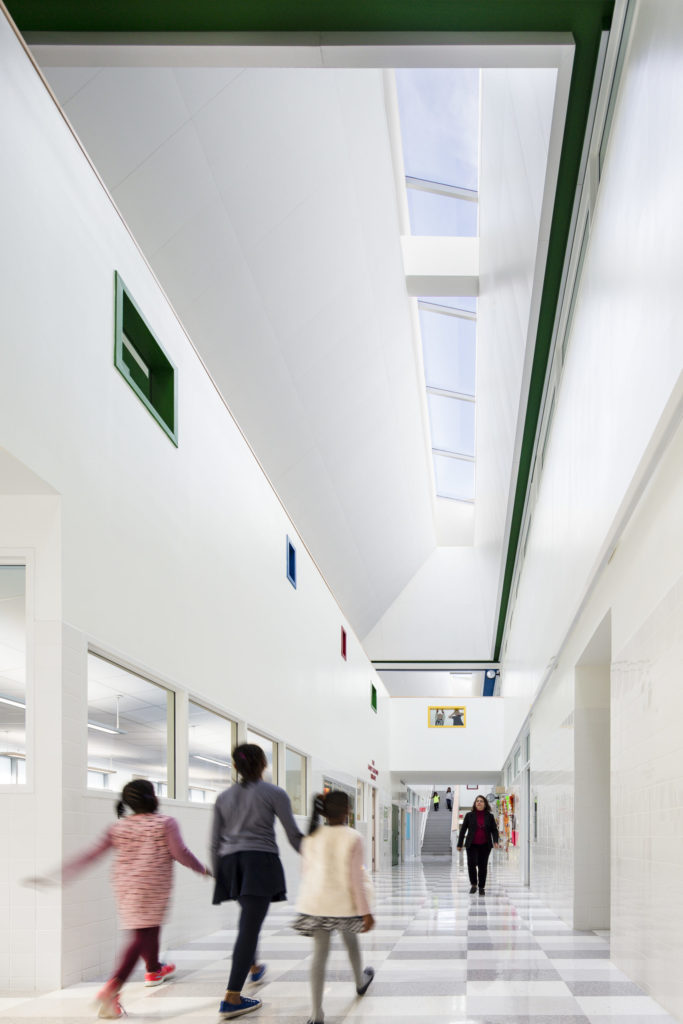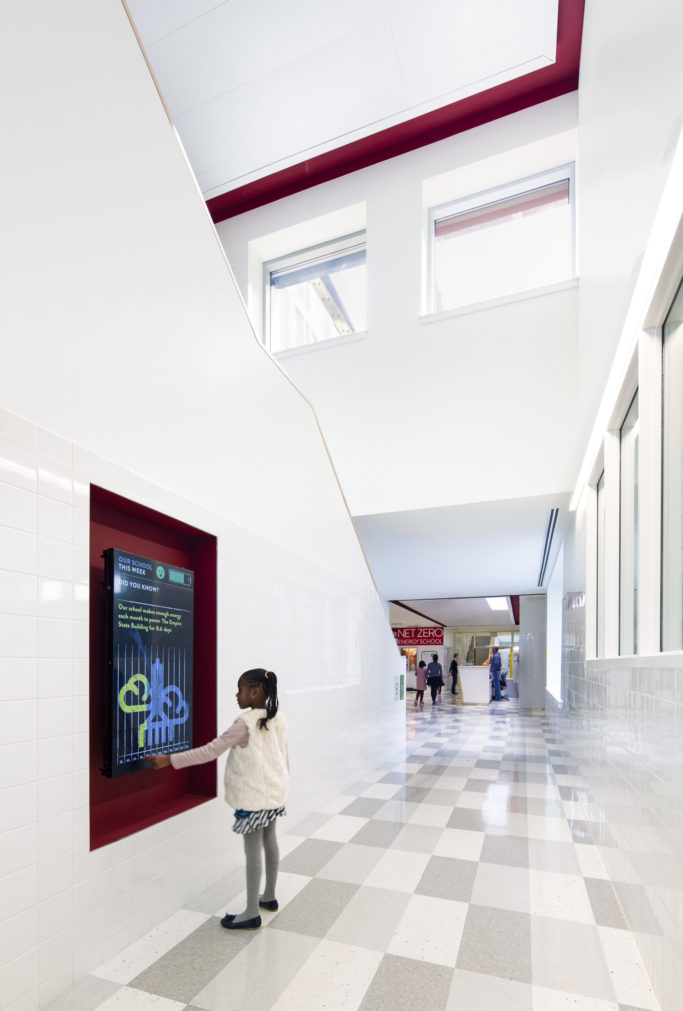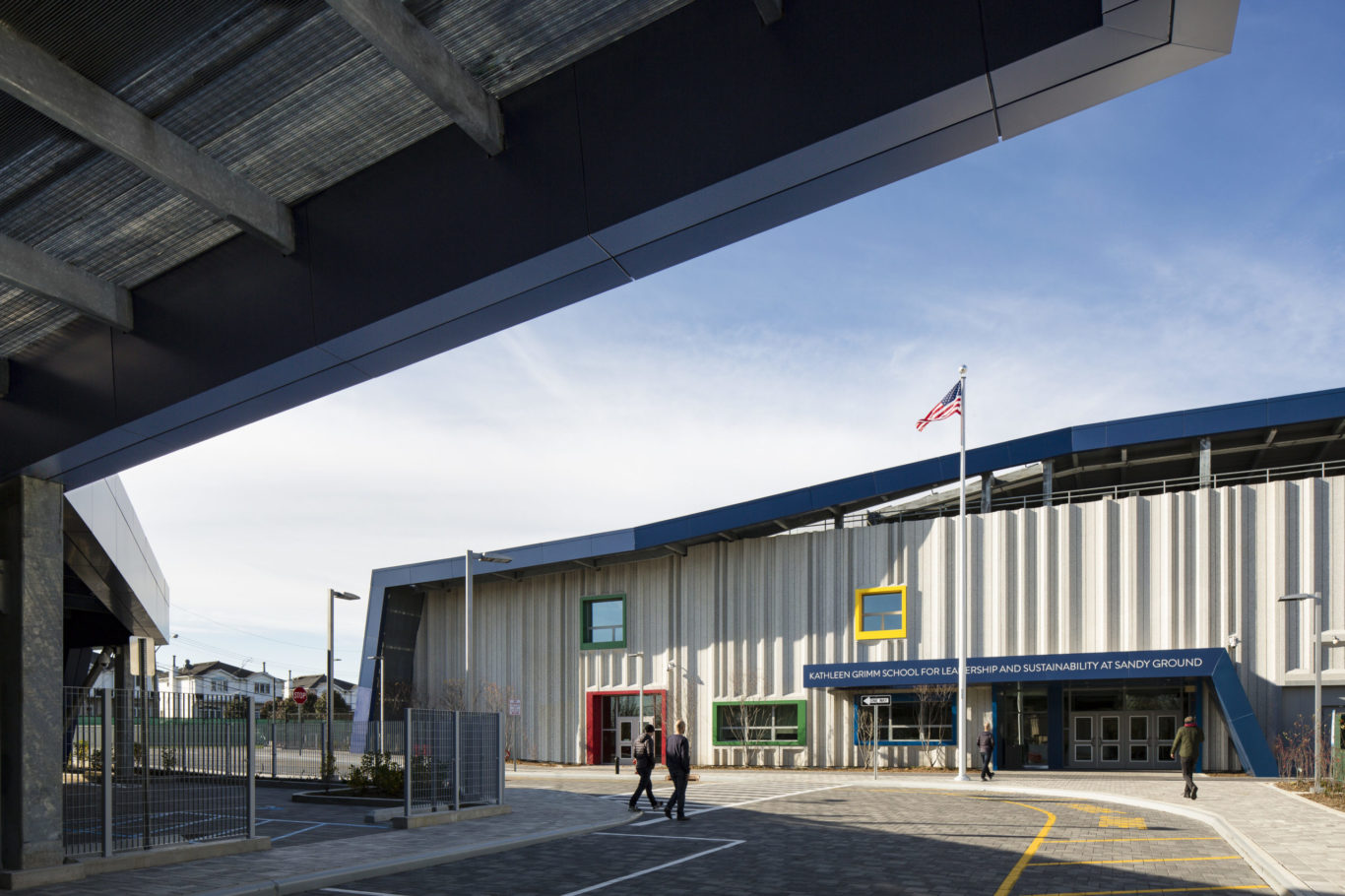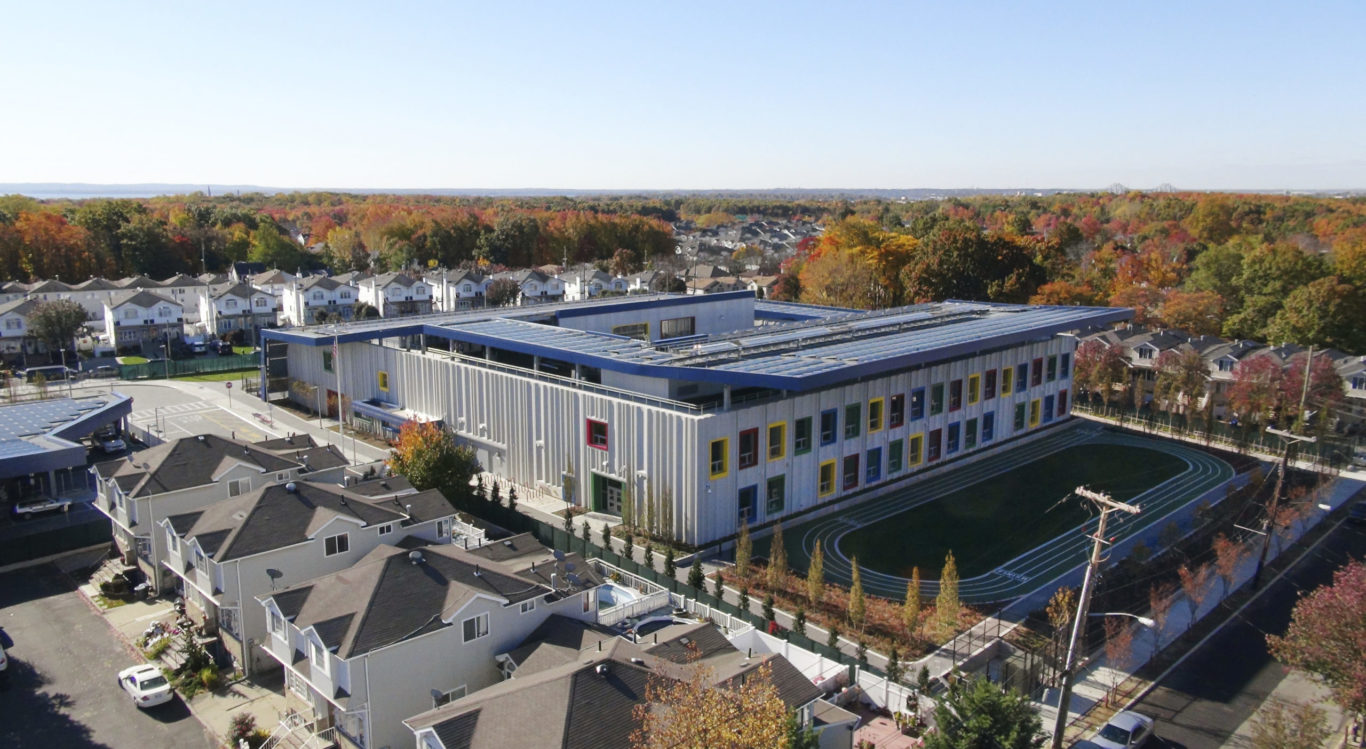Seeking new solutions for sustainability
Buildings are the world’s number one source of greenhouse gas emissions. In New York City, home to the largest school district in the nation, the numbers add up: its 1,600 schools account for nearly 40 percent of emissions from municipal buildings. With the Kathleen Grimm School for Leadership and Sustainability at Sandy Ground (or P.S. 62), the city saw a major opportunity to make a positive impact.

The NYC School Construction Authority (SCA) tasked SOM with creating a model for a greener school. The bar was set high. SOM was asked to design the first school in New York to achieve net-zero-energy — in other words, to produce as much energy as it consumes. Only a handful of net-zero-energy education facilities had been built in the United States, and none had been designed to meet the year-round demands of a New York City public school. The project itself would be an experiment with wide-ranging implications for the future of school design.
There always comes a point where people say, ‘We haven’t done that before.’ Sometimes it’s good to take a risk…and if you’re really focused, you can make it work.

